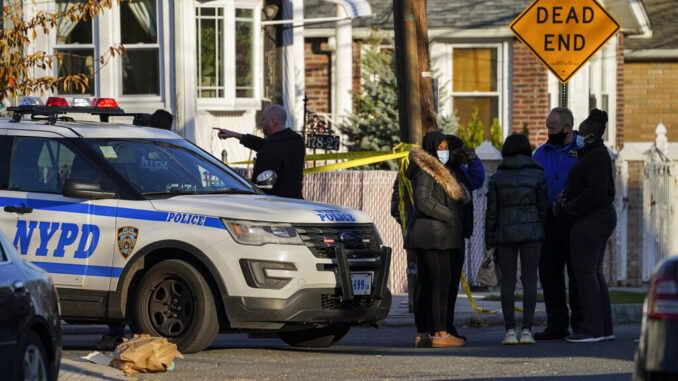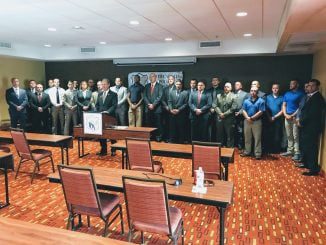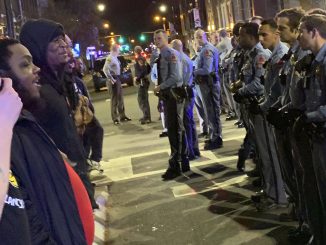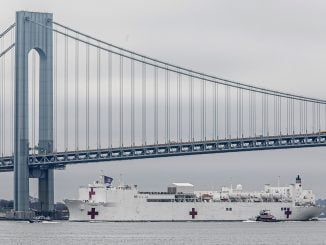
NEW YORK — Two New York City police officers shot and killed an off-duty college security officer on Tuesday after he opened fire and wounded them as they responded to a domestic violence call at his home, Police Commissioner Dermot Shea said.
Rondell Goppy, 41, walked into his Queens home and started shooting around 12:45 p.m., just minutes after the officers arrived there with a woman who had gone to their police station to report an assault, Shea said.
“Whether he was laying in wait or just happened to arrive at that time will be part of the investigation,” Shea told reporters at a news conference outside the hospital where the officers were being treated.
Officer Christopher Wells, 36, was shot in the leg and needed surgery to repair a fractured femur. Officer Joseph Murphy, 33, was wounded in the hand and also required surgery for his injuries.
Both officers were awake and stable, Shea said.
“Thank God they will pull through,” Mayor Bill de Blasio said after visiting with the officers’ families at the hospital. “They have serious injuries, but ultimately they’re going to be OK.”
Wells, a member of the NYPD since 2007, and Murphy, who joined the force in 2015, were both assigned to the 105th precinct, which covers where the shooting took place. Goppy’s home is in a neighborhood near John F. Kennedy International Airport.
Shea said a 41-year-old woman who lives at Goppy’s home went to the police station on Tuesday to report a domestic violence incident that happened on Monday night. The officers accompanied the woman back to the home and were there for about six minutes when Goppy came and started firing, Shea said.
Goppy was pronounced dead at the scene. The woman was not injured. The fire department initially reported that its ambulances were responding to a shooting involving two officers and a civilian. The civilian turned out to be Goppy.
Goppy worked as a peace officer at the City College of New York in Harlem and was licensed to carry firearms. The college confirmed his employment but did not provide details. The college’s website lists Goppy as a “Crime Prevention Specialist.” Public records show that he had been working there for about 10 years.
Shea said Goppy had no criminal record but that there were several domestic violence calls to the home in the past and that police were looking into what came of those cases. A law enforcement official said Goppy had his guns taken away in July but that they were returned in September.
Two of Goppy’s guns were found at the scene and a third was recovered at a different location, Shea said. One of the guns was found under his body, according to the law enforcement official, who was not authorized to speak publicly and did so on condition of anonymity.
Domestic violence calls are some of the diciest that police officers deal with and have led to deadly outcomes in the past. In 2016, Sgt. Paul Tuozzolo was killed and another officer was wounded in a gunfight with a man who had broken into his estranged wife’s home. The man was also killed.
The head of the city’s largest police union said Tuesday’s shootout was a reminder of the dangers that officers face and potential mayhem that he contends could result from movements to slash police budgets and remove officers from responding to certain types of calls.
The city, for example, recently announced a plan to test out having EMS and mental health crisis workers take the place of police in responding to 911 calls for people exhibiting emotional distress. The city aims to launch the program next year in two as-yet-unidentified neighborhoods. Police officers will also respond if a weapon or imminent risk of harm is involved.
“(Sometimes) it seems awfully easy to say here’s the script and here’s what we’ll do,” Police Benevolent Association President Pat Lynch said. “What we see here today and police officers see all the time is that there is no script. We can’t be removed. We need to be there.”



